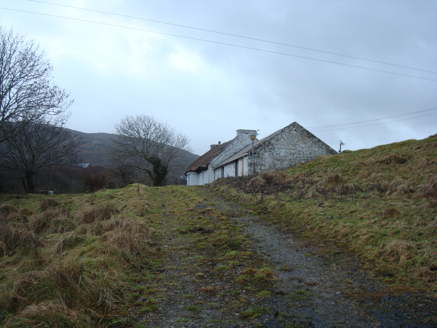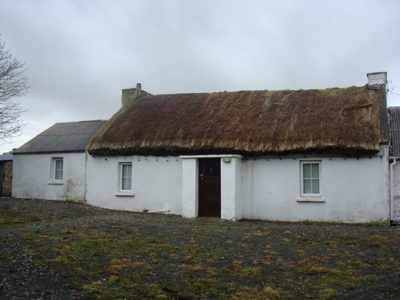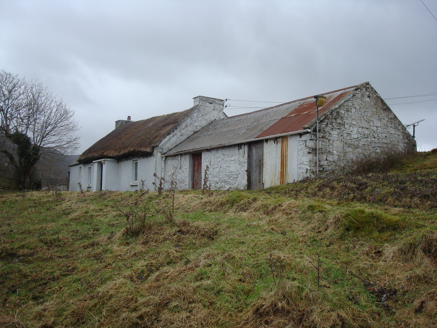Survey Data
Reg No
40901832
Rating
Regional
Categories of Special Interest
Architectural, Social
Original Use
House
In Use As
House
Date
1850 - 1870
Coordinates
224993, 437788
Date Recorded
06/03/2013
Date Updated
--/--/--
Description
Detached three-bay single-storey vernacular house, built c.1860, having windbreak entrance to front, single-bay single-storey addition to south gable, and adjoining two-bay single-storey outbuilding attached to north end. Pitched thatched roof to main block, with rendered copings, and rendered chimneystacks to gables, with wire mesh over thatch secured on ropes tied to metal pegs below eaves level. Pitched corrugated-metal roofs to addition to south and to outbuilding to north. Flat concrete roof to windbreak. Smooth-rendered walls to main block and to addition, and painted rubble stone walls to outbuilding. Square-headed window openings with stone sills and replacement uPVC windows. Square-headed doorway with replacement glazed timber door. Square-headed doorways to outbuilding with battened timber doors and metal sheeting. Set well back from road in elevated site on hillock overlooking Ballymastocker Bay and Stocker Strand to north. Private lane to site from west.
Appraisal
This relatively well-preserved thatched house retains its early form and character. Modest in scale, it exhibits the simple, functional form of Irish vernacular buildings. Of particular interest is the survival of the thatch roof, its rounded profile typical of thatched houses located close to the Atlantic in exposed areas of the northwestern counties, while the pegs at the eaves were used to tie ropes (and sometimes nets) over the roof to secure it against the prevailing winds, as is the case here. The largely blank rear elevation, and the windbreak, are typical features of domestic vernacular in Ireland. The plan form is "direct-entry", typical of western and upland regions. The building has, typically, been extended lengthwise. The attached rubble stone outbuilding helps create an attractive composition with a long low roof-line. The house represents a good example of a once ubiquitous building type and is one of the better surviving examples in the district.





